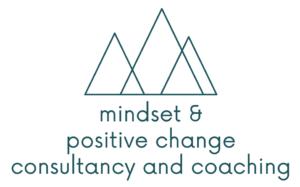HOW TO USE COMPASSION TO ADDRESS SHAME (PERFORMANCE AT WORK AND WITH PEERS & BODY IMAGE)
Understanding Shame And Guilt
While shame and guilt usually go hand and hand, but really they are vastly different from each other. Shame makes us feel like we aren’t good enough, and puts ourself down. But guilt is more like being self-critical or feeling like we are inadequate or unworthy.
There’s this social safeness or social threat that we then start to form or move towards over time. Depending on our experiences as we’re younger and going through our teenage years, that’s kind of what forms how we respond to those memories, those experiences, and those memories of shame is what forms how we react as an adult.
From an experience I had in my later 20s, I submitted a report. At this point in my life especially, I was deeply attached to my work and my output. So having feedback was important to me. I wanted the feedback, but I got this report I was working on ripped apart. There were so many parts of that report, that afterward, it was hard for me to write reports. I felt like “Oh god, I can’t do this. I’m gonna screw it up.” Even now to this day had to do some kind of strategies around reworking my thoughts on who I am as a writer because of that, which is all from just this one report and this one piece of feedback I had gotten.
Compassion Focused Therapy
Now that we have kind of an understanding of shame and where that comes from, I wanted to briefly talk about Compassion Focused Therapy, also known as CFT. Compassion Focused Therapy can reduce shame, self-criticism, worry, and rumination. And that in certain settings can improve depression, anxiety, stress, and other mental health conditions. Understanding the implementation of these different modalities in group settings was most helpful for reducing those. As well as reducing body weight, and shame. Dr. Stan Steindl’s most recent research was done with Dr. Lisa McLean and Dr. Matthew Bane with female survivors of child sexual abuse, and within that group setting showed that it reduced symptoms of PTSD and other things depression, anxiety, stress, and that self-criticizing and shame kind of inadequacy, feeling.
Steps To Utilizing Compassion Focused Therapy
Getting To A Calm State
When you are in your threat system it’s hard to think compassionately, so you want to move from threat to calm first. Getting your body’s nervous system centered and settled into a calm state is the first step of CFT. In order to do that, you’d do that through breathwork, pilates, or something similar. However, you want to try and incorporate this into your routine regularly and not just in the moment.
Using Imagery To Connect To Your Compassionate Self
To cultivate the feeling of safeness, the use of imagery work can help us get back to that safe place. Imagery, for example, you typically want to imagine a place where you feel safe, calm, peaceful, or comfortable.
The Embodiment
By cultivating a sense of both compassionate other and ideal compassionate other, might have certain words of wisdom or compassion that they might offer you. When we start to cultivate a sense of compassion, that is how we are able to shift into that body and brain pattern of compassion. Then we can bring our compassionate selves to those more difficult aspects of self-criticism and shame.
Right now in our day-to-day lives, we know so many people who are going through this experience of either they own a small business and they’re experiencing a little bit of a low, or they’re doing the job searching thing because a lot of people are in that process of job searching. When something doesn’t land, or maybe they don’t hear back from someone that they applied for a job with or they hear back and they don’t get the job. This is happening regularly, if somebody’s applying for jobs, they’re probably applying for 10 or 15 jobs. When that happens, shame and self-criticism that comes up. When you’re like not landing projects or clients are a bit a little bit difficult to work with. Then if you get those thoughts “I’m failing”, “I can’t do this”, or “Everything’s so hard, maybe I should just give this point.” There are all kinds of possibilities. There are shame, self-criticism, and thoughts that come up, and it’s easy at that time for people to slip into old coping mechanisms or addiction. That’s when those coping mechanisms that aren’t useful come into play because that’s kind of a self-soothing agent that’s been learned across time.
Positive Coping Strategies
The compassionate self is also letting your body know that it’s okay to relax, to take however much time is needed to come back from whatever that experience is to get calm. Then to approach that by questioning the internal dialogue and the function of that key, like what is that self-criticism trying to tell you and what can you learn from it? The key is getting to that calm state and then asking yourself, if I wasn’t this emotional about this and distressed or needing to find a job right now, how would I look at this situation? That’s one way you can come at it to also potentially get the learning and to say I would look at it as this is my like, only my fifth interview, I’m still applying for 10 other jobs, and maybe this isn’t the right place for me right now, but there are other places that I can apply for. This is just one hiccup. This is a great way to learn from the experience while still knowing you will move forward and everything happens for a reason.

